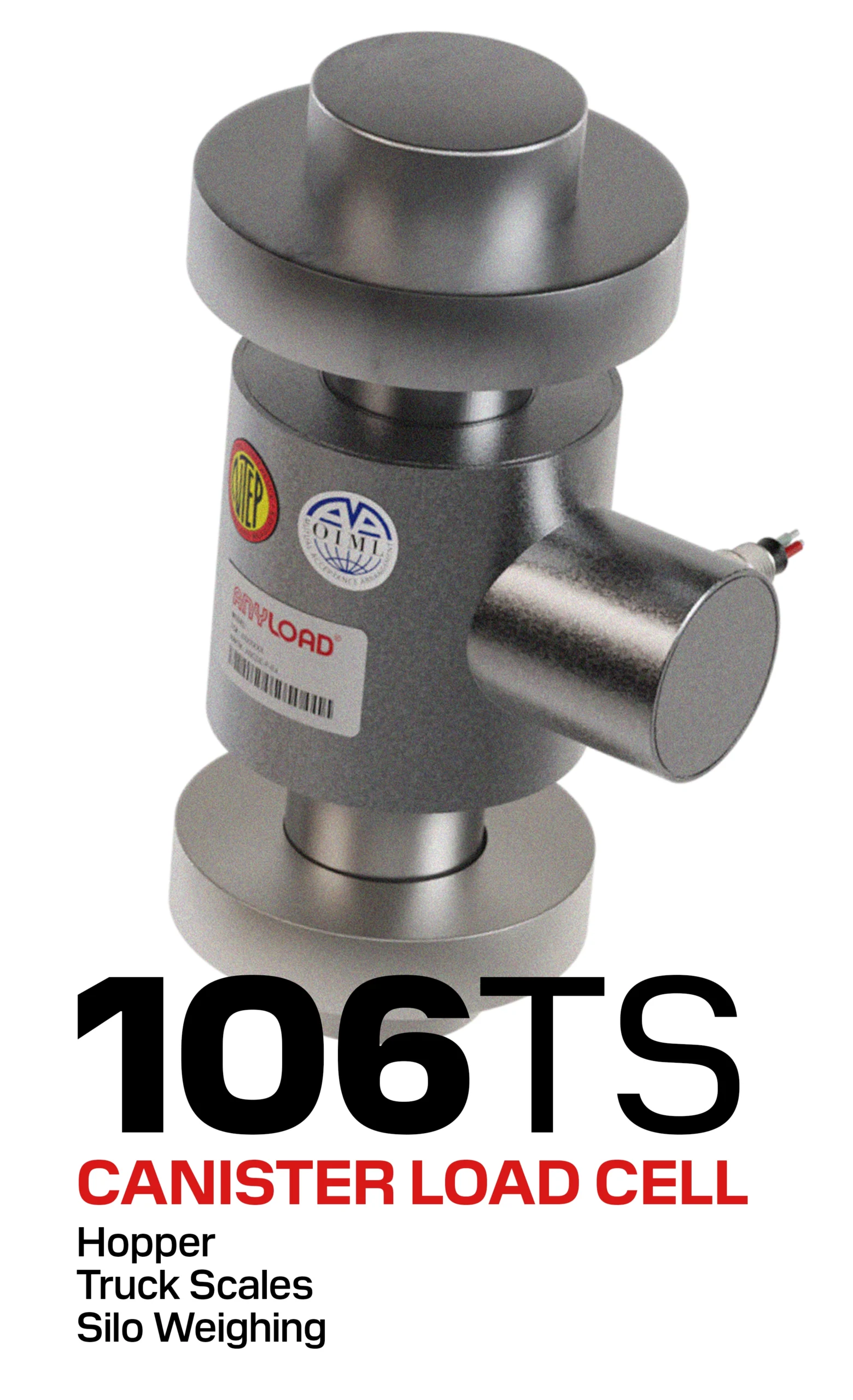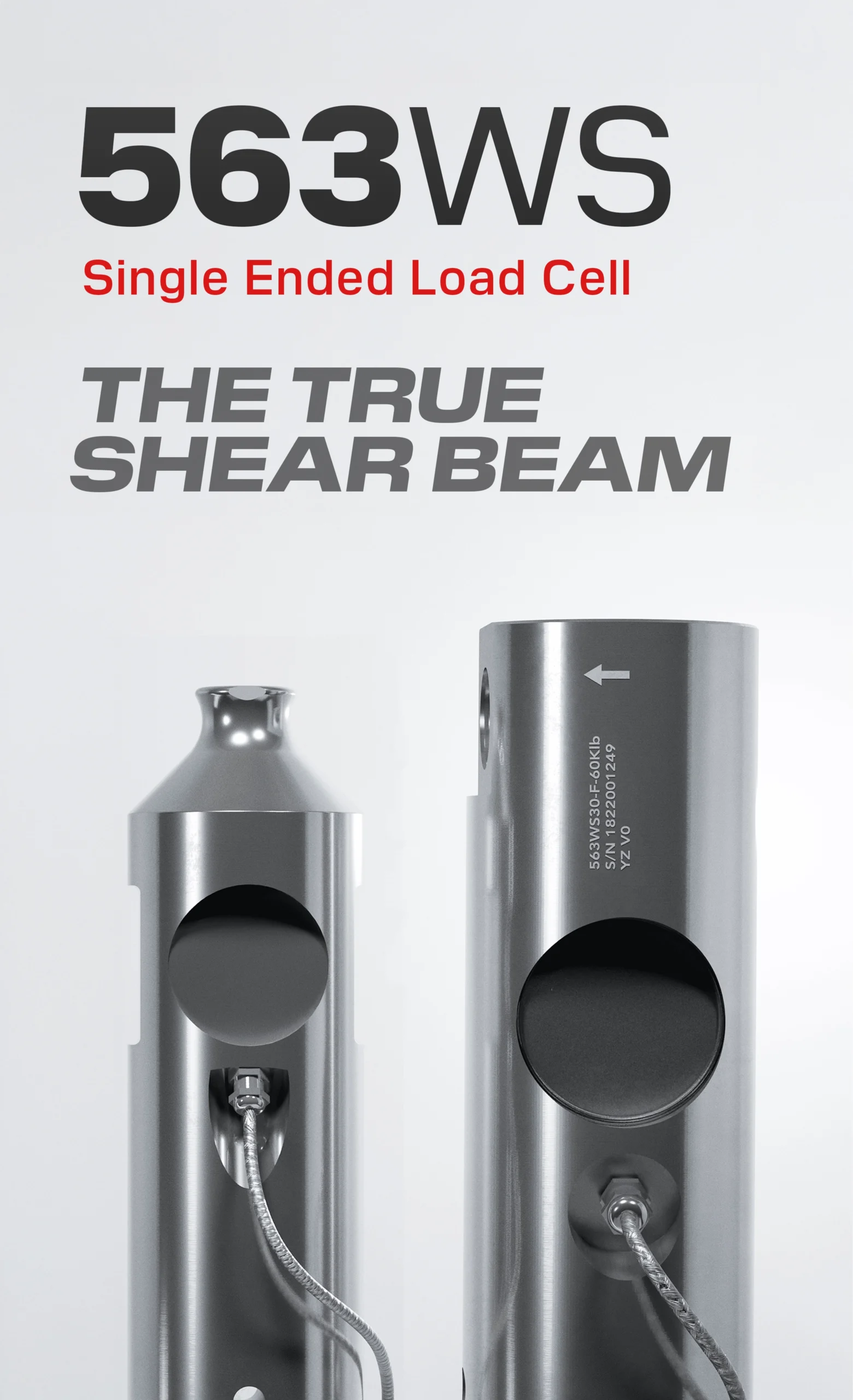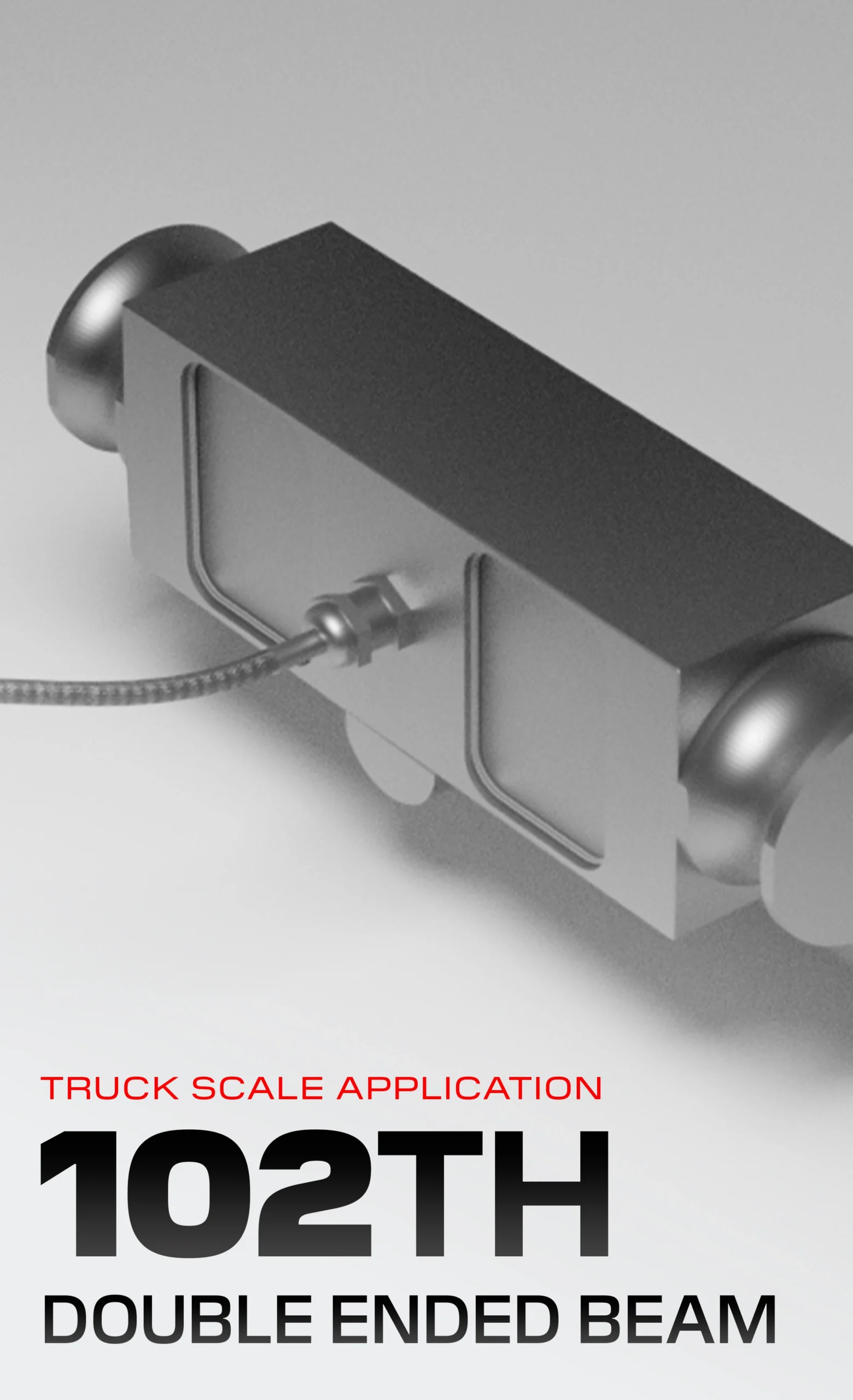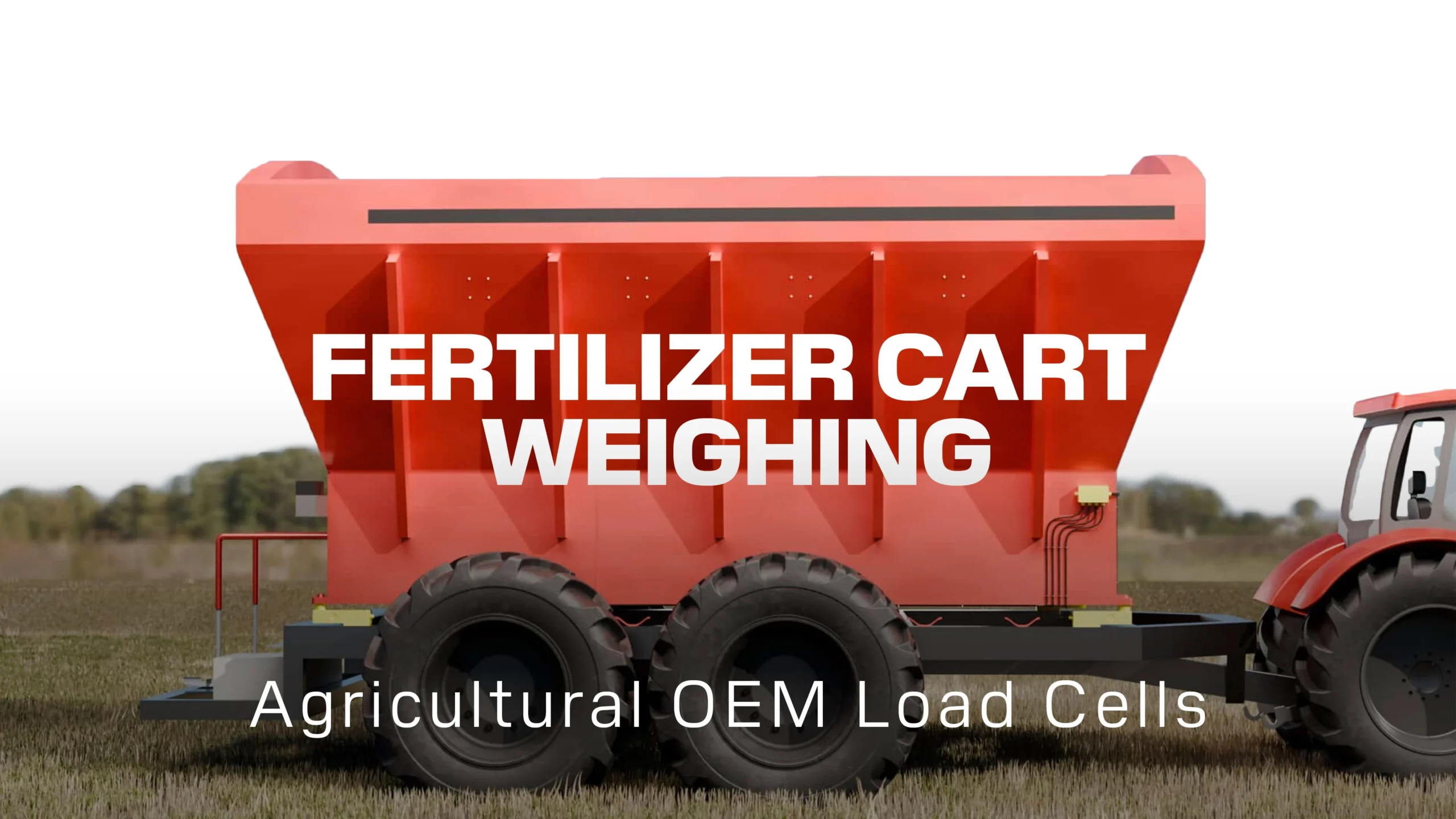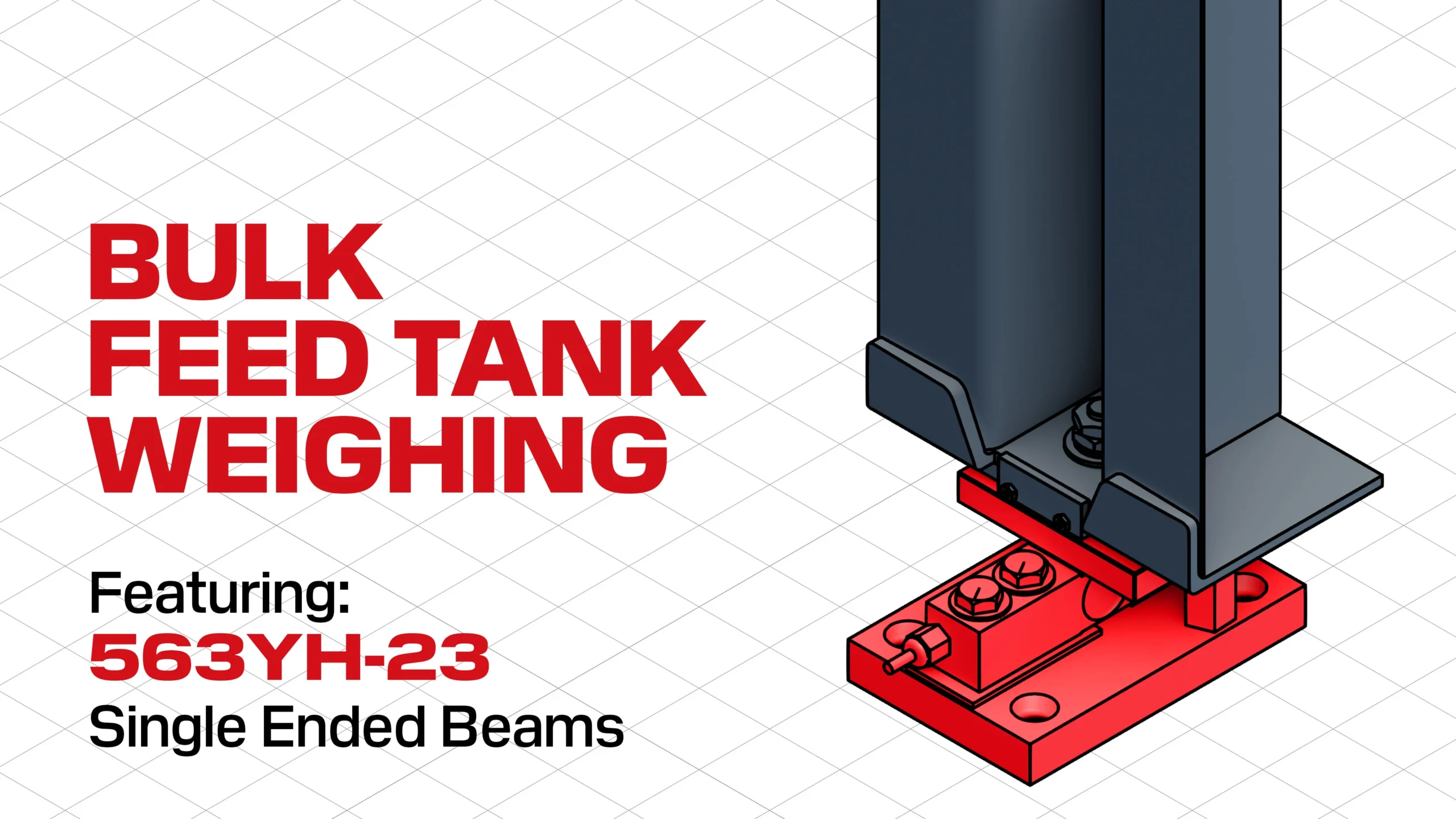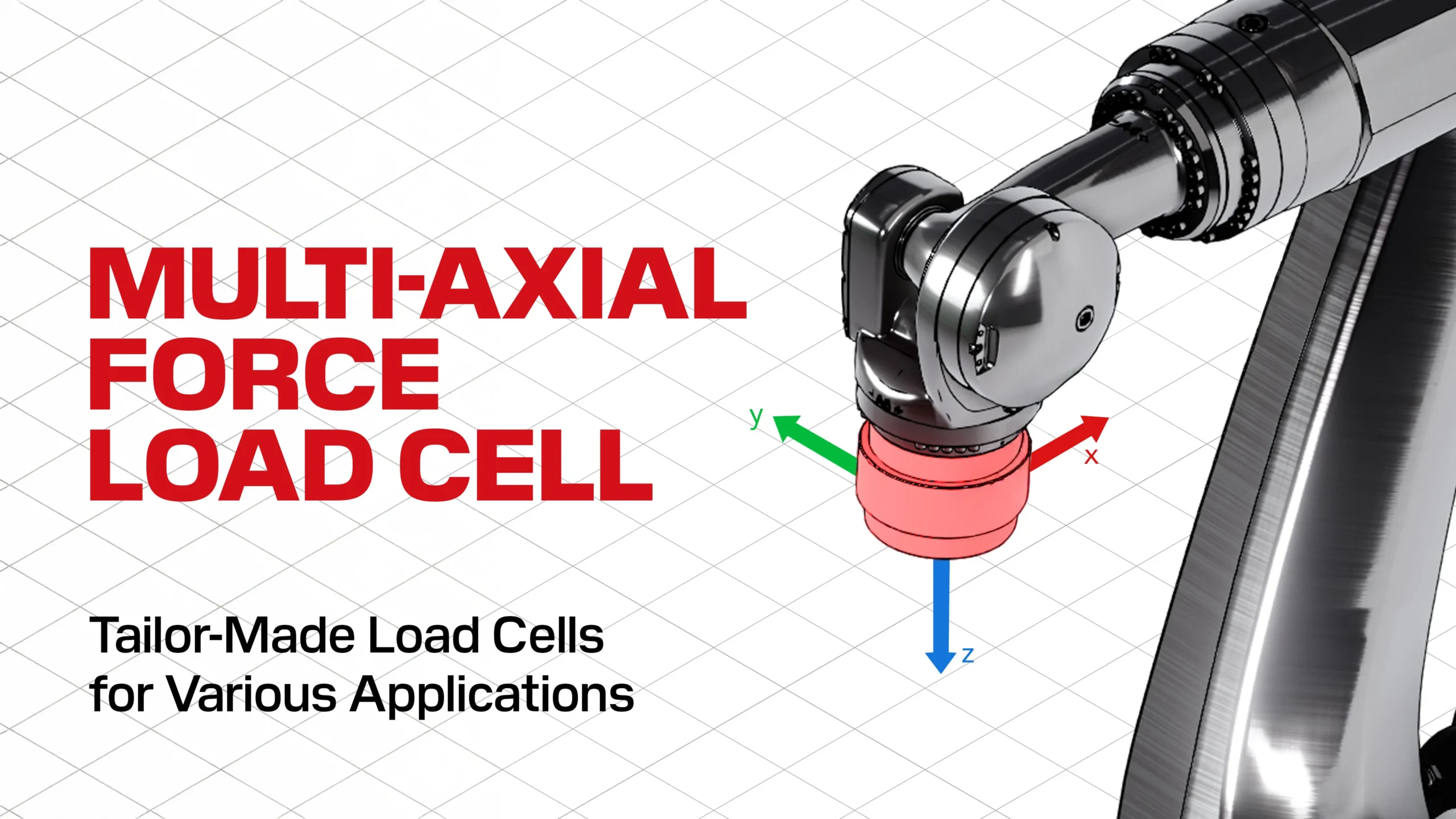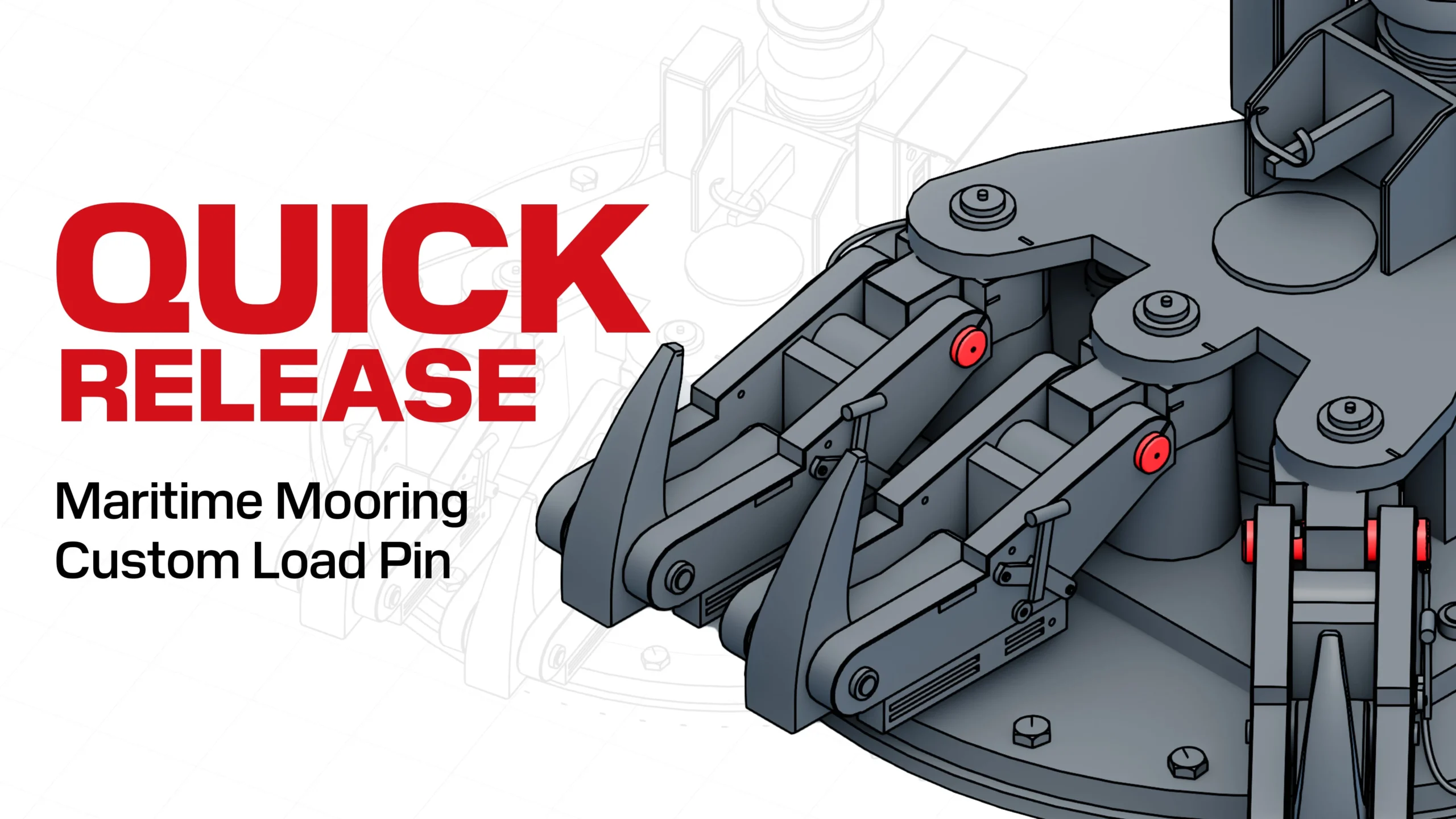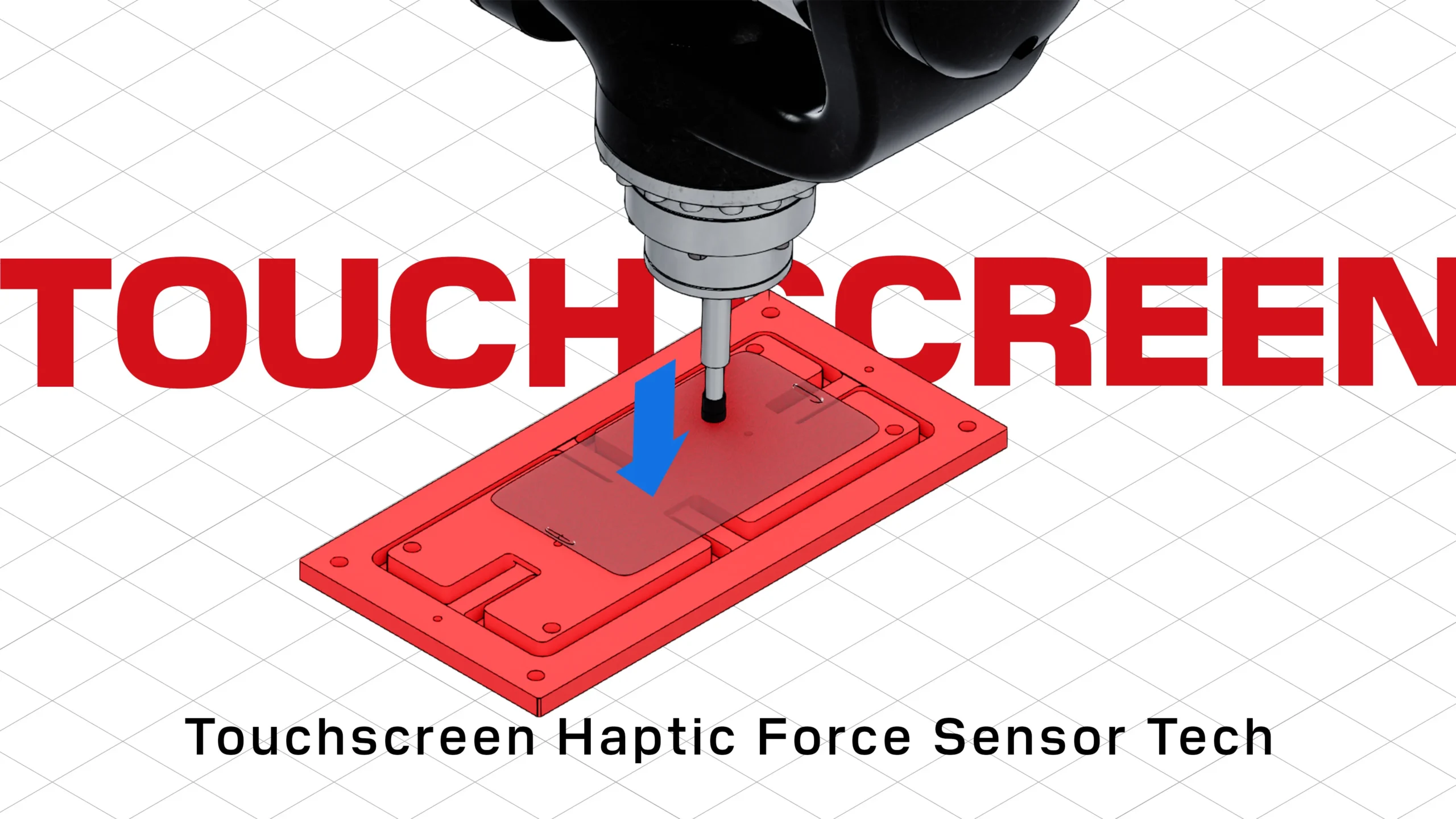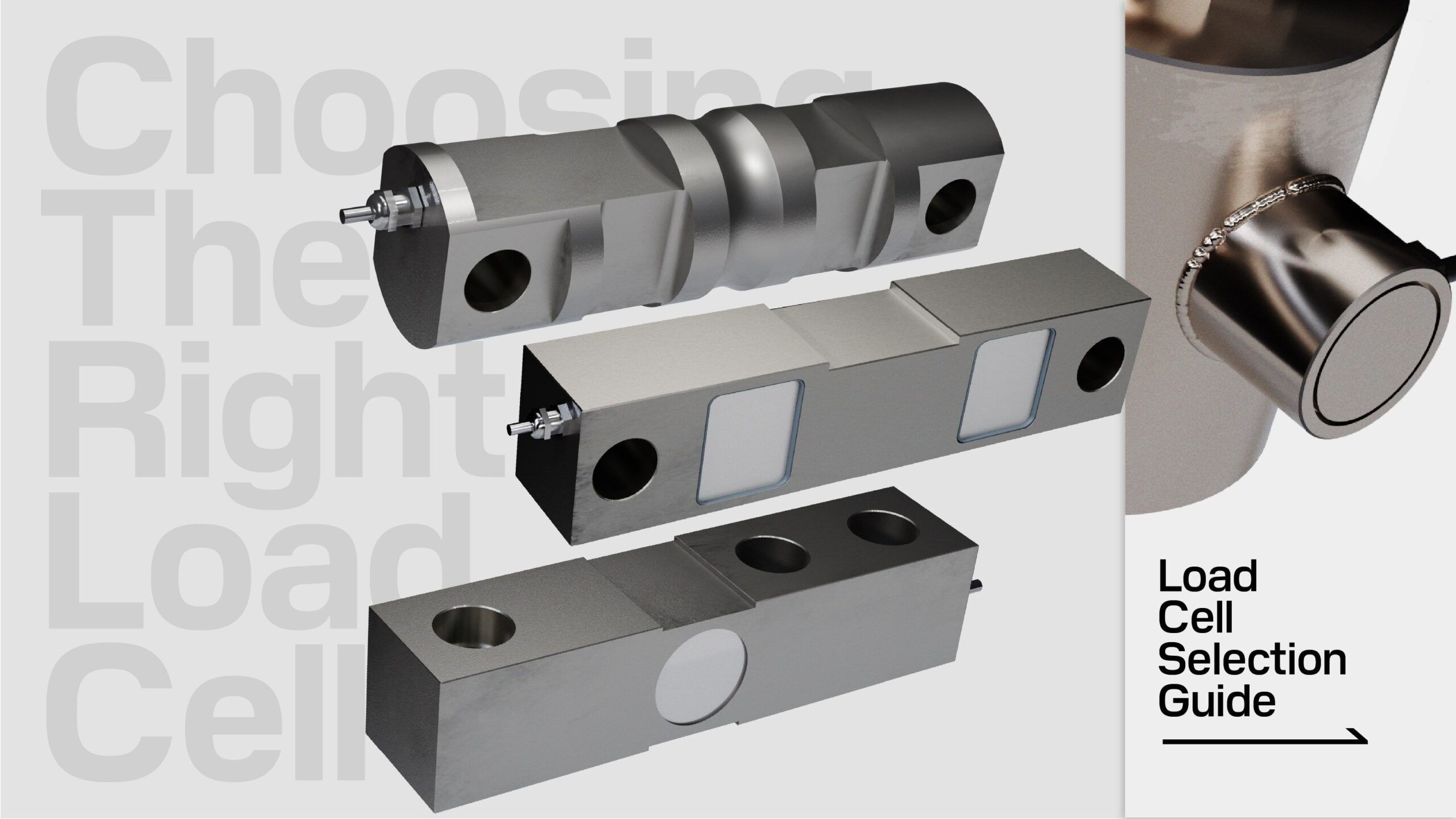Guide to Load Cell Failures
Last Updated On August 20, • 10 min read
Load cells are sensitive instruments engineered to deliver accurate measurements yet are also often expected to perform reliably under harsh conditions. A load cell designed to withstand tons of applied load can still be susceptible to failure when misused or installed in unsuitable environments.
Load cell failure is characterized by the inability to produce a reliable signal output that accurately represents the forces being measured, provided that this inability is not due to external factors within the system and generally caused by either damage or defect. Essentially, a load cell fails when its electronic or mechanical components are compromised. This could be due to damage or defects in its electrical circuitry or any of its mechanical components. Understanding the causes of load cell failure is crucial for maintaining the accuracy and reliability of weighing and other force measurement systems.
1. What Causes a Load Cell to Fail
A load cell is most fundamentally an electrical circuit housed within a load receiving element that deforms predicably when force is applied. The electrical circuit outputs a measurable signal that changes proportionally to the force applied to the metal element. Therefore, damage to either the mechanical element or the electrical circuit of a load cell can lead to a failure, leading to unreliable or no signal output.
Mechanical: The mechanical components of the load cell, primarily the load-receiving metal element of the load cell can be physically damaged or defective. The internal circuitry then outputs incorrect signal outputs based on changes to the mechanical properties that have exceeded the normal specification range that the circuitry was built to measure.
Electrical Failure: Load cells circuitry are highly sensitive and delicate, designed to detect miniscule changes in the mechanical properties of the deflecting element. This circuitry is generally protected by potting, epoxy sealing, and metal caps that are often welded sealed to ensure lasting durability in harsh environments. Compromised circuitry, either caused by a defect during manufacturing or damage will lead to irregular or no signal output.
2. Common Types of Load Cell Damage
Most load cell failures are caused by damage due to accidental or avoidable causes. Understanding these causes can help load cell users to avoid or reduce the likelihood of load cell failures in their applications, limiting the amount of costly service calls, production line downtime, product giveaways, and other inefficiencies.
Overload
DEFINITION: Overloading is caused when the load applied exceeds the rated capacity of the load cell. This can lead to irreversible damage to the load cell, permanently compromising weighing performance
CAUSES:
- Improper Operation: When users unintentionally exceed the safe overload limit due to a lack of awareness about a measuring system’s safe loading parameters and risk of overloading.
- Inadequate Selection: The weighing system may not be appropriately designed or selected for the types of loads being applied
- Load Cell Quality and Design: The design and manufacturing quality of the load cell can affect its resistance to overloading. ANYLOAD overloads every single load cell produced to its safe overload specification to ensure a higher safety factor for or products.
EXPLANATION:
- Mechanical: The element of the load cell is deformed beyond its designed elastic limits, leading to irreversible bending or even fracture of the load cell body. Strain gauges can also stretch or compress beyond their elastic limit. Even if the strain gauges are undamaged, they will permanently detect a deformation greater than the load exerted. Severe loading beyond the breaking overload capacity rating of a load cell can lead to a mechanical failure, and can pose a serious safety issue.
- Electrical: Overloading alters the resistance value of the strain gauges, unbalancing the Wheatstone bridge circuit, causing voltage output values far beyond the standard calibrated range.
AVOIDING OVERLOAD:
- Select a suitable load cell for the application that is adequately rated to protect against any predicted occasional or regular overload.
- Clearly communicate the maximum capacity of the load cell or overall system to all users with signs, documentation, and training.
- For smaller capacity systems, consider installing overload stops in the weighing system if possible to mechanically protect the load cell.
- Source load cells from a reputable supplier that has a high safety factor, tested safe overloading, and if necessary, customized to be more overload resistant for your specific application.
Shock Load
DEFINITION: A shock load is a sudden and drastic increase of load that can damage the load cell through overloading.
MECHANICS:
A shock load typically occurs when material is dropped uncontrollably onto the weighing platform or when there is a sudden, forceful impact. This sudden increase in force, even if it lasts only for a fraction of a second, can cause irreversible damage to the load cell. The mechanical structure of the load cell may deform permanently, and components such as strain gauges can exceed their elastic limits, leading to failure.
EXPLANATION:
Load cells operate using an analogue signal generated by a constant electrical circuit. During a shock load, the abrupt and extreme force causes a significant, instantaneous change in the resistance of the strain gauges within the Wheatstone bridge circuit. This can lead to a permanent imbalance in the circuit, compromising the load cell’s accuracy and functionality. Even a brief instance of shock loading can result in lasting electrical and mechanical damage to the load cell.
AVOIDING SHOCK LOAD:
- Follow all advice for avoiding overload.
- Avoid dropping loads onto a weighing platform from a significant height or other rough handling that can result in any sudden and drastic application of force.
- Install shock absorbing systems to system.
- Thick plating or materials isolating the load from the load cell will have a protective effect by partially absorbing and distributing the kinetic energy.
Electrical Surge Damage
DEFINITION: Surge damage refers to the harm caused to load cells due to sudden, excessive electrical voltage or current that exceeds the load cell’s designed limits, leading to malfunction.
COMMON CAUSES:
- Lightning Strikes: Direct lightning strikes or nearby lightning activity can induce high-voltage transients that pass through conductive materials.
- Power Supply Issues: Fluctuations in power supply, such as voltage spikes or unstable power sources, can cause sudden increases in voltage or current.
- Welding Operations: High currents from welding can induce electrical surges that travel through metal structures and reach the load cell, causing damage.
EXPLANATION: Surges of electricity, whether from lightning or welding, can pass through metal structures. When these surges travel through the load cell, they can cause significant electrical damage to the internal components. Surges that travel through the cables connecting the load cell can introduce high voltage directly into the strain gauges and the Wheatstone bridge circuit, leading to immediate damage.
AVOIDING SURGE DAMAGE:
- Ensure that metal structures around the load cell are properly grounded to prevent surge currents from passing through the load cell.
- Use a stable and regulated power supply to ensure consistent voltage and current levels and protect against surges from the power grid.
- Isolate the load cell and its wiring from welding currents by disconnecting the load cell cable or removing the load cell and using barriers to prevent the welding current from passing through the load cell structure.
- Some load cells may have transient resistors built into the cell to provide some degree of protection.
- Lightning arrestors, in-built surge protection may be applicable for certain weighing systems that help to protect a weighing system from surges.
Water Damage / Moisture Ingress
DEFINITION: Moisture damage in a load cell refers to the adverse effects caused by the ingress of water or high humidity levels, which can compromise the electrical, mechanical, and structural integrity of the load cell, leading to inaccurate measurements and potential failure.
COMMON CAUSES:
- Cable Damage: Water ingress through a damaged cable can allow water to travel inside the jacket and into the load cell, damaging the internal components inside. Short circuits between wires can also occur.
- Inadequate Selection or Protection: Selecting an inappropriate load cell for the application environment and insufficiently protecting the load cell will lead to moisture damage from inadequate sealing.
- Corrosion: The sealing of load cells can become corroded and compromised over time, allowing moisture to enter directly or through condensation, even through microscopic cracks and fissures.
- Internal Condensation: Moisture can condensate inside any internal cavity that house electronic components, including welded sealed cavities over time with use. Temperature cycling in high humidity is most likely to lead to internal condensation.
- Harsh Cleaning Processes: Particularly in washdown environments, rigorous cleaning procedures can lead to damage to load cells.
EXPLANATION: Electrical circuits are vulnerable to moisture damage that can corrode sensitive components and cause shorts. Strain gauges are especially susceptible to moisture damage, as the thin films can easily have their resistive properties and adhesion compromised. ANYLOAD utilizes pressurized water chamber and humidity chamber testing to ensure that our load cells can endure in harsh environments by simulating extreme moisture exposure for extended periods.
AVOIDING SURGE DAMAGE:
- Carefully assess the application environment to determine the appropriate IP / NEMA Rating and corrosion resistance for the load cells and electronic systems used.
- Potting and sealing of internal cavities can help to prevent moisture ingress, with welded seals offering the best protection.
- Avoid applying high pressure water jets too close to load cells, especially near any circular or rounded-rectangle metal caps on the tops or sides of load cells.
- Source load cells from a reputable manufacturer that utilizes high quality materials and components that can be more resistant to moisture damage (e.g., some strain gauges are significantly more moisture-resistant)
Cable Damage
DEFINITION: Cable damage in a load cell refers to any physical or chemical harm to the electrical cables that receives excitation and outputs signal.
COMMON CAUSES:
- Rodent Damage: Rodents may chew on cables, causing physical damage to the insulation and internal wires.
- Corrosive Chemicals: Exposure to corrosive chemicals can degrade the cable insulation and conductors, leading to short circuits or open circuits.
- Environmental Degradation: Prolonged exposure to UV light, extreme temperatures or moisture can accelerate the deterioration of the cable’s sheath and insulation over time.
- Physical Damage: Pinching, cuts, piercing, and crushing of the cable can compromise the cable leading to disrupted signal transmission and or moisture ingress.
EXPLANATION: Cable damage in load cells occurs when the cables transmitting signals between the load cell and instrumentation are compromised, leading to inaccurate or lost data. This damage can result from mishandling, rodent activity, exposure to corrosive chemicals, environmental degradation, or physical impacts like pinching, crushing, cuts, and abrasion. Such damage disrupts the electrical pathways, causing signal interference, increased resistance, and potential short circuits.
AVOIDING SURGE DAMAGE:
- Proper Handling: Do NOT handle a load cell by its cable and avoid cutting the cable of a load cell (this typically voids the warranty of most manufacturers and can compromise measurement performance).
- Protective Coverings: Steel braided sheathing and cable conduits can help defend against UV, mechanical, and rodent damage to cables.
- Proper Installation: Install load cells in a way that minimizes risk of cable damage by avoiding sharp bends, tight loops, and is securely routed away from foot or vehicle traffic.
Fatigue
DEFINITION: Fatigue damage in a load cell refers to the progressive and irreversible deterioration of the load cell’s structural and functional components due to repeated cyclic loading over time, leading to a loss of accuracy and eventual failure.
COMMON CAUSES:
- Repeated Cyclic Loading: Continuous application and removal of load, especially at varying magnitudes, causes cumulative stress on the load cell materials.
- Vibration: Exposure to constant vibration, often found in industrial environments or machinery applications, accelerates fatigue by continuously stressing the load cell components. This issue is especially common in mixing and conveyer weighing applications.
- Overloading: Repeated instances of slight overloading, even if not enough to cause immediate failure, can contribute significantly to fatigue damage over time.
EXPLANATION: Fatigue damage occurs when a load cell is subjected to repeated cycles of loading and unloading. This cyclic stress can lead to the gradual loss of mechanical elasticity or deformational linearity of the load cell element, compromising its accuracy over time. Most modern load cells from reputable manufacturers are designed to withstand over 5 million cycles at full capacity without significant performance degradation.
Vibrations induce high-frequency cyclic loading on the load cell. Each cycle of vibration imposes stress reversals on the load cell material. Even if these stresses are below the material’s yield strength, repeated application can initiate dislocation movements at the atomic level, leading to the initiation and growth of macrostructural changes over time. These result in the progressive degradation of the material’s mechanical properties, leading to signs of fatigue failure, including increased signal drift, hysteresis, and nonlinearity in measurements.
AVOIDING SURGE DAMAGE:
- Proper Load Cell Selection: Choose load cells that are rated for the expected load cycles and environmental conditions of the application. Some load cells are specifically designed for high-vibration applications.
- Avoid Overloading: Ensure that the load applied does not exceed the rated capacity of the load cell, even temporarily.
- Vibration Isolation: Use vibration dampers or weigh mounts to minimize the impact of constant vibrations on the load cell.
Fatigue
DEFINITION: Thermal damage in a load cell refers to the adverse effects caused by exposure to extreme high or low temperatures, typically below -40°C (-40°F) or above 70°C (158°F), which can compromise the load cell’s structural integrity, electrical performance, and overall accuracy.
COMMON CAUSES:
Operation in environments with extreme ambient temperatures can lead to thermal damage, especially to the sensitive electronic components inside a load cell.
EXPLANATION: Thermal damage occurs when a load cell is exposed to temperatures outside its specified range, affecting both mechanical and electrical components. High temperatures can cause thermal expansion, reducing material elasticity and leading to deformation, while low temperatures can make materials brittle. Strain gauges within the load cell are particularly sensitive to temperature changes, which can alter their resistance and cause inaccurate readings.
AVOIDING SURGE DAMAGE:
- Proper Load Cell Selection: Choose load cells that are rated for the expected temperature ranges. Customized load cells specifically built and tested to required temperature range are also an option.
- Insulation and Shielding: Protect load cells from extreme temperatures with appropriate insulation and shielding.
3. Manufacturing Defects (Component Failures)
Load cells from reputable manufacturers are very unlikely to have defect failures as a result of rigorous production and quality assurance procedures. Failure rates ‘out-of-box’ can be as high as 1-2% for some suppliers, while ANYLOAD tries to adhere to a <0.01% failure rate.
DEFINITION: Component failures due to manufacturing defects refer to imperfections or faults in the various parts of a load cell, arising from errors during the manufacturing process, which can lead to compromised performance and accuracy.
COMMON CAUSES:
- Material Impurities: Contaminants in the materials used for components such as strain gauges, adhesives, and wires can affect their performance and longevity.
- Faulty Adhesive Application: Improper adhesive application during the bonding process can lead to poor adhesion, air bubbles, or uneven surfaces, impacting the functionality of strain gauges and other bonded components.
- Manufacturing Errors: Errors such as incorrect placement, misalignment, or damage to components during manufacturing can result in defects. This includes issues like strain gauge misalignment, improper wiring, and poor assembly practices.
- Cold Solder Joints: Cold solder joints occur when the soldering process is not performed correctly, leading to weak electrical connections that can cause intermittent faults or complete failure.
- Inadequate Calibration: Components that are not properly calibrated during manufacturing can produce inaccurate measurements, affecting the overall performance of the load cell.
EXPLANATION: Component failures in load cells due to manufacturing defects can significantly impact their performance and accuracy. Material impurities can introduce inconsistencies in electrical properties, leading to erratic or inaccurate readings. These defects can lead to issues such as signal drift, increased hysteresis, nonlinearity, and overall unreliability in load cell outputs, compromising the accuracy of the measurements.
AVOIDING SURGE DAMAGE:
- Material Quality Control: Ensure the use of high-quality, pure materials for all components to minimize impurities and defects.
- Precision in Adhesive Application: Utilize automated systems for precise adhesive application and bonding processes to avoid air bubbles and ensure even surfaces.
- Strict Manufacturing Protocols: Implement rigorous quality control measures during manufacturing to detect and correct any placement, alignment, or assembly errors.
- Proper Soldering Techniques: Ensure that soldering is performed under optimal conditions to avoid cold solder joints and to create strong, reliable electrical connections.
- Thorough Calibration: Perform comprehensive calibration of all components during manufacturing to ensure accurate and reliable measurements.
- Controlled Manufacturing Environment: Maintain consistent environmental conditions, such as temperature and humidity, during bonding and manufacturing processes to enhance component stability and performance.
